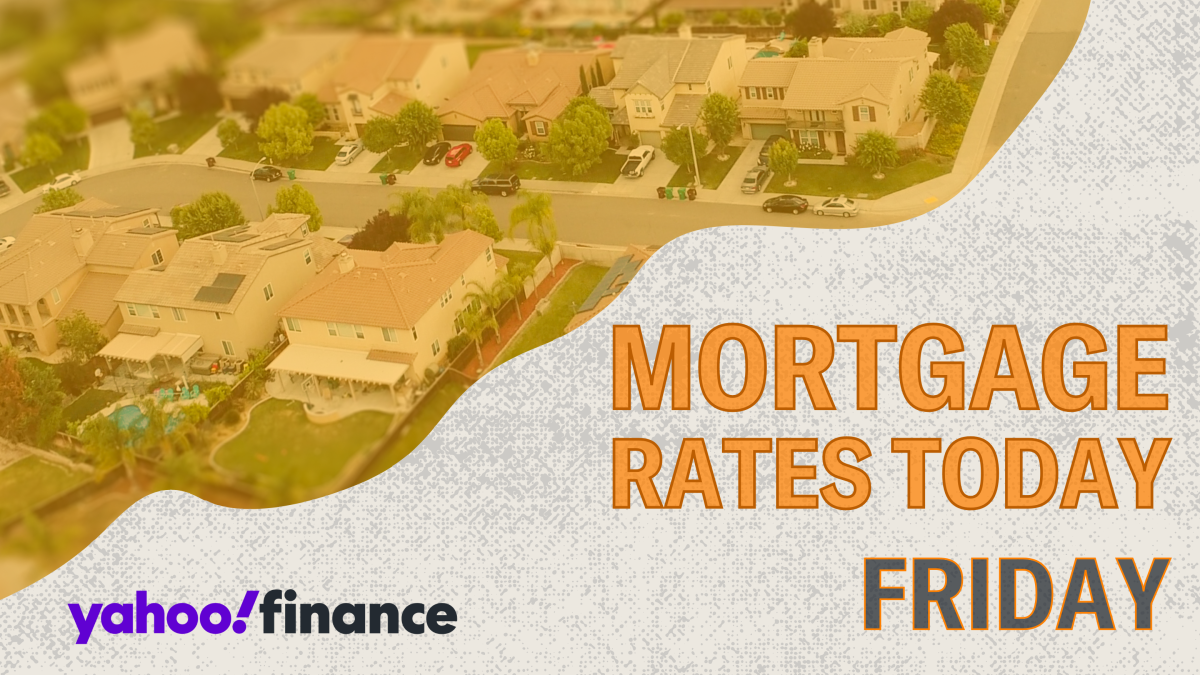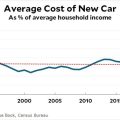Fixed mortgage rates have decreased for the second week in a row, according to Freddie Mac. The 30-year and 15-year fixed rates both dropped by 11 basis points this week, landing at 6.35% and 5.51%, respectively.
Mortgage rate decreases may feel minor — but rates are down much more than people might think. Since this week last year, the 30-year fixed rate has dropped by 83 basis points, and the 15-year rate has plummeted by a whopping 1.04%. As long as you’re financially ready to buy a house, today’s rates put you in a much better spot to buy than you would have been a year ago.
Dig deeper: Is now a good time to buy a house?
Current mortgage rates
Here are the current mortgage rates, according to the latest Zillow data:
-
30-year fixed: 5.87%
-
20-year fixed: 5.69%
-
15-year fixed: 5.29%
-
5/1 ARM: 6.24%
-
7/1 ARM: 6.44%
-
5/1 FHA: 4.89%
-
30-year VA: 5.24%
-
15-year VA: 4.63%
-
5/1 VA: 5.51%
Remember, these are the national averages and rounded to the nearest hundredth.
Learn more: 5 strategies to get the lowest mortgage rates
Current mortgage refinance rates
These are today’s mortgage refinance rates, according to the latest Zillow data:
-
30-year fixed: 6.09%
-
20-year fixed: 5.90%
-
15-year fixed: 5.44%
-
5/1 ARM: 6.37%
-
7/1 ARM: 6.59%
-
5/1 FHA: 4.89%
-
30-year VA: 5.27%
-
15-year VA: 5.21%
-
5/1 VA: 5.45%
Again, the numbers provided are national averages rounded to the nearest hundredth. Mortgage refinance rates are often higher than rates when you buy a house, although that’s not always the case.
Learn more: Want to refinance your mortgage? Here are 7 home refinance options.
Free mortgage calculator
Yahoo Finance has a free mortgage payment calculator. Use the calculator to see how various mortgage rates and loan terms could affect your monthly payments.
Our calculator also considers homeowners insurance, property taxes, and other expenses that affect your monthly payment. This will give you a better idea of what you’d realistically pay in a month than if you just look at the mortgage principal and interest.
How mortgage interest rates work
A mortgage interest rate is a fee for borrowing money from your lender, expressed as a percentage. You can choose from two types of rates: fixed or adjustable.
A fixed-rate mortgage locks in your rate for the entire life of your loan. For example, if you get a 30-year mortgage with a 6.5% interest rate, your rate will stay at 6.5% for the entire 30 years unless you refinance or sell.
An adjustable-rate mortgage locks in your rate for a predetermined amount of time and then changes it periodically. Let’s say you get a 7/1 ARM with an introductory rate of 6%. Your rate would be 6% for the first seven years, then the rate would increase or decrease once per year for the last 23 years of your term. Whether your rate goes up or down depends on several factors, such as the economy and housing market.
At the beginning of your mortgage term, most of your monthly payment goes toward interest. Your monthly payment toward mortgage principal and interest stays the same throughout the years — however, less and less of your payment goes toward interest, and more goes toward the mortgage principal or the amount you originally borrowed.
Learn more: Adjustable-rate vs. fixed-rate mortgages
Which mortgage term length should you get?
A 30-year fixed-rate mortgage is a good choice if you want a lower mortgage payment and the predictability that comes with having a fixed rate. Just know that your rate will be higher than if you choose a shorter term and will result in paying significantly more in interest over the years.
You might like a 15-year fixed-rate mortgage if you want to pay off your home loan quickly and save money on interest. These shorter terms come with lower interest rates, and since you’re cutting your repayment time in half, you’ll save a lot in interest in the long run. But you’ll need to be sure you can comfortably afford the higher monthly payments that come with 15-year terms.
Read more: How to decide between a 15-year and 30-year fixed-rate mortgage
Typically, an adjustable-rate mortgage could be good if you plan to sell before the introductory rate period ends. Adjustable rates usually start lower than fixed rates, then your rate will change after a predetermined amount of time. However, 5/1 and 7/1 ARM rates are very similar to 30-year fixed rates right now. Before getting an ARM just for a lower rate, compare your rate options from term to term and lender to lender.
When will mortgage rates drop?
Mortgage rates are down this week, but they’re still relatively high compared to the height of the COVID-19 pandemic in 2020 and 2021 — back when rates were closer to 3%. So, can we expect mortgage rates to drop more dramatically this year?
The short answer: Yes.
The long answer: The next Federal Reserve meeting is on Sept. 18, and the Fed will announce whether it will cut the federal funds rate. Although the Fed rate doesn’t directly move mortgage rates, they are correlated. When the Fed rate falls, mortgage rates tend to decrease too.
It’s extremely likely the Fed will finally slash its rate at the September meeting. According to the CME FedWatch tool, there’s roughly a 67.5% chance of a 25-point decline and a 32.5% chance of a 50-point cut.
The Fed is also expected to slash its rate more than once in 2025, so mortgage rates should continue to go down next year.
Dig deeper: How the Federal Reserve rate decision affects mortgage rates
Mortgage interest rates today: FAQs
What are mortgage interest rates doing today?
Today, the 30-year and 15-year fixed mortgage rates are each down 11 basis points since last week. The drops since this time last year are much more significant, though.
How low will mortgage rates go in 2024?
Economists currently expect 30-year fixed mortgage rates to end the year between 6.4% and 6.5%.
How high could mortgage rates go by 2025?
It’s actually likely that mortgage rates will get lower in 2025, not higher. The Federal Reserve will probably slash the federal funds rate several times next year, which will help push mortgage rates down.



